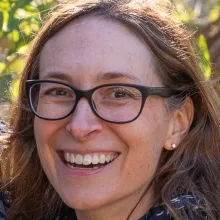Lighting up dark fibre for seismic imaging
Distributed acoustic sensing (DAS) is an emerging passive seismic technique that converts telecommunication fibre-optic cables (dark fibres) into thousands of ground motion sensors. This project aims to harness DAS and the big data arising from it to develop unprecedented high-resolution images of the Earth's structure
Project status
Content navigation
About

High-resolution seismic images of the subsurface are the best proxy for inferring geological structures and processes in the interior of the Earth. Using traditional techniques and instrumentation, both in Australia and worldwide, seismologists are able to detect changes in the Earth’s structure using what are effectively spot measurements and interpolating the data between distant locations, which are often kilometres, if not 10s or 100s of kilometres apart. This results in significant gaps between these seismic images and geologic maps or geological samples. In contrast, seismic images from large numbers of measurements, or “large-N”, array data from DAS will answer questions about Earth’s structure on a ~1-10 metre scale rather than >~2-10 kilometres from the most densely spaced passive seismic experiments in Australia. The technology will begin to bridge the existing spatial disparities between seismic images of the Earth and dense geological and geochemical sampling of Earth.
This Future Fellowship project will advance cutting-edge DAS technology and big data processing to develop unprecedented high-resolution images of the Earth’s subsurface, detect micro-seismicity, and thereby relate geological observations to Earth processes.
I am seeking two PhD students and Honours students to work with a team of researchers on DAS applications in observational seismology.
Deployment of the DAS instrument at NASA Deep Space Network at Tidbinbilla in 2021 with Dr. Herb McQueen, Prof Meghan Miller and Dr. Voon Hui Lai.
Locating the dark fibre near Haast, New Zealand in May 2023 with Dr. Voon Hui Lai.


